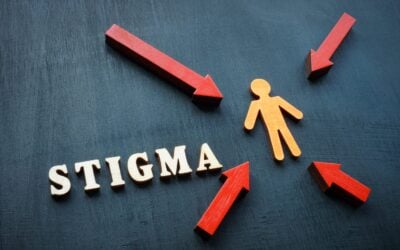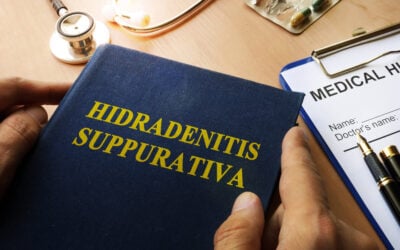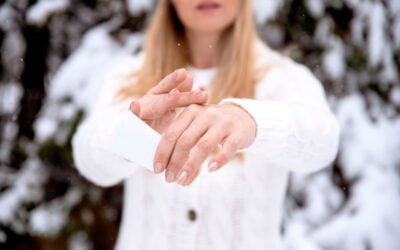
According to the National Rosacea Society, roughly 415 million people across the globe and 16 million in America have rosacea. But as widespread as it is, there is a lot of confusion about its causes, triggers, and treatments.
We have compiled a list of the top 10 rosacea myths we’ve heard at Forefront. Our board-certified dermatologists set the record straight, debunking the assumptions and half-truths so you can better understand and manage your skin.
What is rosacea?
Rosacea is a chronic condition that gives skin a red, flushed appearance, especially on the face. During a flare-up, you may have patches on your cheeks that look like pimples, or you might see tiny broken blood vessels on your nose. There is no agreed-upon cause and no known cure, however, there are treatments and practices that can make rosacea manageable.
The first step is to learn what’s true and what isn’t about this common condition.
Rosacea myth #1: It’s just sensitive skin
Yes, rosacea causes your skin to be sensitive, but there’s more going on. Rosacea is an inflammatory skin condition that can come and go with certain triggers, such as:
- Stress
- Strenuous exercise
- Exposure to sunlight
- Hot or cold weather
- Hot drinks
- Alcohol and caffeine
- Certain foods, such as spicy foods
Sensitive skin is a skin type just like dry or oily skin, and mild cleansers and cosmetics can be helpful in reducing irritation. But treating rosacea requires product ingredients that are not just gentle. They also need medicinal attributes that work to heal the skin and strengthen its moisture barrier.
Rosacea myth #2: It’s a type of acne
One type of rosacea called papulopustular rosacea includes bumps that look like pimples. There are three other types of rosacea (erythematotelangiectatic, phymatous, and ocular), and those don’t include bumps at all. Rosacea isn’t acne and shouldn’t be treated like it. In fact, many of the things that work well at managing acne, such as retinol, alpha-hydroxy acid, and salicylic acid can be very damaging to skin with rosacea and make it worse.
Rosacea myth #3: Only women have it
While rosacea is up to three times more common in women, men can have it too—though their symptoms might present a little differently. Rosacea can make shaving tricky, and is all-too-often attributed erroneously to heavy drinking.
Rosacea myth #4: It’s caused by poor hygiene
One big rosacea myth is that it will clear up with cleaner skin. There is no truth to this. You can have very clean skin and still have severe rosacea. In fact, scrubbing the skin, using exfoliants or other harsh ingredients, and washing too often will only increase inflammation, redness, and discomfort. (Read about the cleansing routine recommended by our dermatologists here.)
Rosacea myth #5: If you leave it alone, it will go away
Unlike pimples that pop up randomly and disappear within days, rosacea doesn’t eventually go away on its own. It’s a progressive condition, so without a treatment plan, you may have more frequent flare-ups, more noticeable symptoms, and even permanent skin damage. By avoiding triggers and practicing the right skincare routine, your skin will look and feel better. And if your rosacea is severe, your Forefront dermatologist can recommend additional treatment options.
Rosacea myth #6: Only fair-skinned people get rosacea
Some think that rosacea is a problem only for people of Irish, English, or Scandinavian origins. While it might be more common in people with fair skin, it can afflict anyone. African Americans, Latin Americans, and Asians can have rosacea too.
Rosacea myth #7: You need to give up caffeine
If you’re talking about a hot cup of coffee or tea, this might be true, but it’s not always caffeine that’s the problem. Caffeine can contribute to dilated blood vessels; however, it might be the heat from the beverage that’s raising your skin’s temperature, which leads to redness. Dermatologists recommend noting what you’re eating and drinking any time you experience a rosacea flare. This way, you’ll be able to discover your particular triggers.
Rosacea myth #8: Alcohol consumption is a rosacea cause
If you have rosacea, drinking alcohol can indeed trigger a flare-up. However, alcohol does not cause the condition. And don’t confuse the flush of rosacea with the stereotype of a red, swollen, bulbous nose of someone who drinks too much. That is a similar but more severe condition called rhinophyma, characterized by nose thickening and enlarged oil glands.
Rosacea myth #9: You can catch rosacea from someone
This is completely false. Rosacea may be hereditary, but it is not contagious.
Rosacea myth #10: Nothing can be done about rosacea; you just have to live with it
Rosacea can’t be cured, but it can be managed. Understanding and avoiding what is likely to cause your flare-ups can minimize symptoms. So can using products on your face that soothe your skin rather than irritate it. For mild to moderate cases, this may be enough to live comfortably with rosacea.
Severe cases of rosacea can cause tremendous discomfort and self-consciousness. A Forefront dermatologist can provide relief through a variety of methods. Prescription-strength topical and oral medications can reduce flushing and bumps. And laser therapy treatments can deal with pigmentation issues and visible blood vessels.
Some rosacea laser treatments offered by Forefront include:
- Cutera Excel V Treatment
- Genesis® Laser Treatment
- Pulsed Dye Laser (PDL) Treatment
- Sciton® BroadBand Light (BBL) Treatment
While your condition may never go away, the bottom line is that there are many options available to improve your comfort.
Forefront is here to improve your skin’s health
At Forefront, our board-certified dermatologists are committed to educating patients about conditions like rosacea. Because having an understanding of your skin’s needs can help you improve your overall health.
Find a location near you and contact Forefront for a consultation today.





